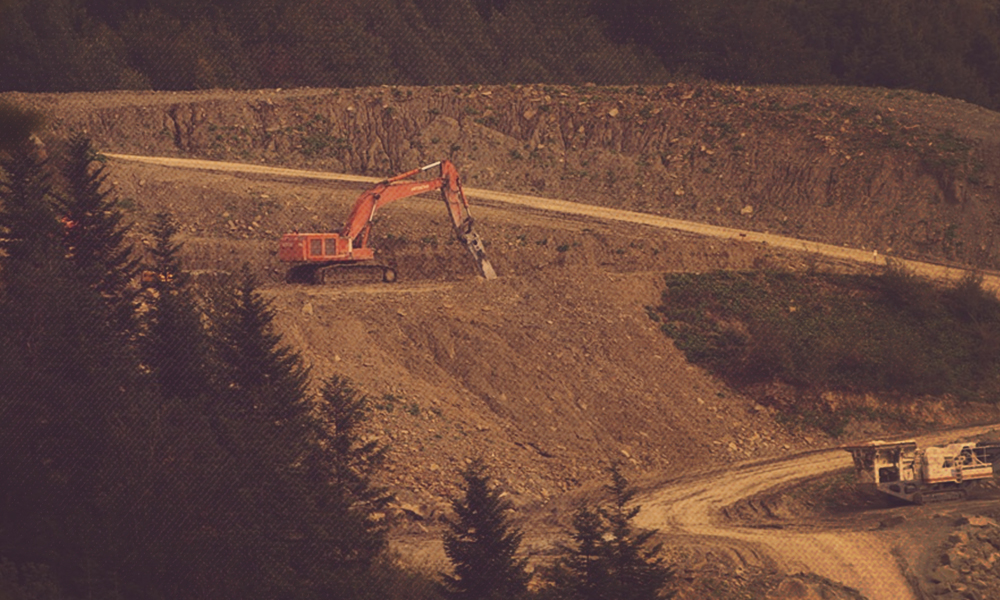
Image Credit: Pixabay
Jharkhand Forests, Wildlife Sanctuaries Being Wiped Out For Iron Ore Mines
9 March 2020 1:04 PM GMT | Updated 9 March 2020 1:05 PM GMT
Editor : Prateek Gautam |
A free soul who believes that journalism, apart from politics, should stand for social cause and the environment.
By : The Logical Indian Crew
We are an independent and public-spirited digital media platform for Indian millennials. We report news and issues that matter as well as give you the opportunity to take action.
To uncover the on-going ecological disaster, a study of the records of the past 55 years is needed as they are missing in current accounts.
Wildlife sanctuaries are being hollowed out and turned into opencast iron ore mines in Jharkhand.
A DownToEarth report states that this has happened at the hands of the state government. In a detailed plan, the state's government has cleared three wildlife sanctuaries off its records in iron ore-rich West Singbhum district. These are Sasangda-buru in Saranda forest division, Bamiaburu in Kolhan forest division and Songra or Tebo in Porahat division.
To uncover the on-going ecological disaster, a study of the records of the past 55 years is needed. These sanctuaries have been mentioned in a report prepared by the now-defunct Indian Board for Wild Life (IBWL) on November 24, 1965, for a delegation of the International Union for Conservation of Nature.
Undivided Bihar, the report says, had seven protected areas - two national parks and five sanctuaries.
These parks and sanctuaries also feature in the Indian Forest Records: Glossary of terms used in nature conservation and wildlife management, published by the Forest Research Institute (FRI) in 1970.
The book, authored by P Venkataramany, says while the Songra sanctuary was created in 1932, the remaining two were created in 1936. But two of the sanctuaries disappeared from records the day the Wildlife Protection Act, 1972, was enacted.
"The Act says sanctuaries notified before its promulgation will be deemed to be sanctuaries," says MK Ranjitsinh, retired government official, who was the principal author of the Act.
Yet, none of the government documents published after 1972 mention the Bamiaburu and Songra sanctuaries. Information about the two sanctuaries is insufficient enough for experts to have difficulty in pinpointing their exact locations.
"If they are not there anymore, then it is a clear case of obfuscation," says Ranjitsinh. The third sanctuary, Sasangdaburu, was last mentioned in the working plan of the Saranda forest division for 1976-77 to 1995-96.
In the working plan, it was named Saranda or Sasangda Game Sanctuary and said to be spread over 314 sq km. It adds that the sanctuary was notified in February 1968 and covers forest areas of Tholkabad (10,244 hectares), Karampada (4,444 ha), Kodalibad (2,224 ha), Tagooda (56 ha), Karujagdaburu (34 ha), Samta (4,907 ha) and Tirilposi (9,586 ha).
"We tried locating the notification documents for the three sanctuaries three to four years ago, but could not find them," admits Sashi Nandkeolyar, principal chief conservator of forests, Jharkhand.
This is quite unusual because, after the 1972 Act, the other Bihar sanctuaries were increased in size and then re-notified, says Raza Kazmi, a Jharkhand-based wildlife researcher.
"The Saranda working plan was not redrawn after 1996 because most mining leases, including those belonging to the Steel Authority Indian Limited (SAIL), had to be renewed around the 2000s," says R K Singh of non-profit Legal Initiative for Forest and Environment.
Karampada, where the sanctuary was supposed to be, has been hollowed out by SAIL's 879 ha iron ore mine. The area today has numerous narrow streams of red wastewater from the mine which zigzag through what otherwise would have been a pristine forest.
A 2016 study by the Wildlife Institute of India found that plant species in the Saranda forest had come down to just 87, from over 300 species earlier. They also could not spot a single elephant, even though the 2010 census recorded 253 elephants.
Historically, Saranda mines have been feeding India's very first industrial towns like Bokaro Steel City in Jharkhand and Rourkela in Odisha. The government's focus on heavy industries, including steel, from the Second Five Year Plan (1956-61) and the Industrial Policy of 1956 further threatened the sanctuaries.
This explains why Saranda's landscape was damaged even as several government documents warned against it. The 1965 Indian Board for Wild Life (IBWL) report, for example, says elephants have benefited from the Sasangdaburu sanctuary, which can become one of the country's best sanctuaries with proper management.
"But the whole area has been leased out to the National Minerals Development Corporation for the extraction and export of iron ore. This has played havoc with the sanctuary, and for all practical purposes it can be written off," it adds.
The 1996 working plan was no different. "Saranda Game Sanctuary, as mentioned in the preceding plan, has almost lost its existence due to the coming up of two massive mines iron ore mining projects, namely, Kiriburu and Maghehatuburu. These two projects have badly disturbed the habitat of wild animals in this locality."
The impact of mining is also clear from the State of Forest Reports released by FSI. Between 2001 and 2019, the forest cover in West Singhbum district plummeted by 361 sq km to 3,366 sq km.
The district also has the highest rate of land degradation in Jharkhand and human activities such as mining are to be blamed, suggests the latest Desertification and Land Degradation Atlas created by Indian Space Research Organisation in 2016.
Experts say that acquiring land for mining activity would have been difficult had the government not eliminated the three sanctuaries. While the first mining leases in Saranda were given in the 1950s, the unfettered jump in leases would have been checked because of later day court orders.
"On February 14, 2000, the Supreme Court in T N Godavarman case observed that even a fallen leaf and grass cannot be extracted from any sanctuary if the activity is not mentioned in the approved management plan of a sanctuary," says Singh.
On August 4, 2006, the apex court ruled that mining should not be allowed within one km from the boundary of a sanctuary.
On December 4, 2006, it observed that all projects located within 10 km from the boundary of a sanctuary will need permissions from the National Board for Wildlife (which replaced IBWL in 2003) if its eco-sensitive zone is not notified under the Environment Protection Act, 1986.
"This means all existing mines within 10 km of the Sasangdaburu are technically illegal as they do not have permissions," says Singh. Mining is a huge money churning business for Jharkhand, which contributed nearly 11 per cent of India's iron ore production in January 2019, according to the Indian Bureau of Mines inventory.
The share was substantially higher till 2013 when the Centre appointed the Justice Shah Committee to look into illegal mining. The committee report in 2014 led to the closing of several illegal mines in the area.
Acting on its recommendation, the Union Ministry of Environment, Forest and Climate Change (MoEF&CC) in 2014 stopped giving fresh mining clearances in Saranda till the Management Plan for Sustainable Mining (MPSM) was created.
The ministry released MPSM in June 2018, under which it declared nearly 80 per cent of the forest (43,000 ha) as a no-mining zone. Just two months later, the state government started putting pressure on the Union ministry to revoke the no-mining zone because several companies, including SAIL, JSW Group and Vedanta, have mining interests in the area.
As a result, the Centre has formed a committee with experts from the Indian Council of Forestry Research and Education, Indian Institute of Technology — Kharagpur and Indian School of Mines-Dhanbad to reassess MPSM.
"The resource curse of Saranda has engulfed three wildlife sanctuaries. It now threatens the entire forests," says Singh.
Also Read: Jharkhand Puts Off Airport Construction Plans To Protect Elephant Corridor
 All section
All section














